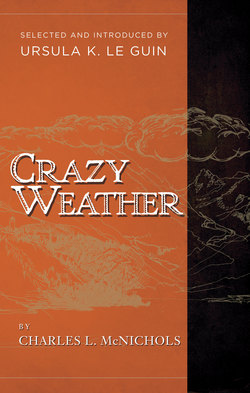Читать книгу Crazy Weather - Charles L. McNichols - Страница 5
На сайте Литреса книга снята с продажи.
Preface by Natachee Scott Momaday AS TOLD TO JAY FULTZ
ОглавлениеFifty years ago Charles McNichols cast forth a sensitive young mixed-blood in Crazy Weather. South Boy he was called, because he was born downriver—on the Colorado, the lifeline for the Mojaves. South Boy reminds me a little of Haske, the boy in my book Owl in the Cedar Tree. Both of them feel the pull of two cultures, Indian and white. But Haske is securely and wholly Navaho, and South Boy is as much white as Mojave. Growing up is never easy; South Boy’s struggle is harder than most. Sometimes he thinks like a white man and sometimes like an Indian. Who is he? A complication is that he feels the first stirrings of sexuality, an ancient restlessness competing with a dawning sense of responsibility to others.
Crazy Weather is often compared to Huckleberry Finn because South Boy and his Indian friend, Havek, go on a great adventure and—like Huck and the black runaway slave, Jim—learn a heap about life and death. South Boy, too, resists the “civilizing” influence of a white schoolmarm. But what will become of him? Can he follow the customs of his Indian chum? Can the games of their childhood be transferred to an adult arena? Can he enter whole-heartedly into dream-singing and learn to read sign when it counts? Can he reconcile the hard-lined Heaven and Hell of his mother’s Presbyterianism with the shadowy eternity of the Mojaves? Can he learn to enjoy the moment, like an Indian, and not worry about the future, like a white man? Can he do a Great Thing and win an honored name without killing? Can he live simply and deeply and avoid facing the distressing alternatives that cause white people to turn gray?
Both South Boy and Havek go a long way toward manhood in the four days of Crazy Weather, when intense heat and thunder and lightning mirror the inner condition of adolescence. But for South Boy the journey is not straightforward, is hedged round with wistful pretense and dogging doubt. To learn what happens to him and how he comes out you must read this beautifully written novel. Take your time. Soak up the detail: the taste of sugar-sweet muscats on a hot day, the shifting light on the yellow desert, the coolness of river water the color of coffee with cream, the unearthly sound of a dreamer’s song.
My hope is that Crazy Weather will be read in and out of school with the freshness of youth and reflectiveness of years. It has much to teach. About reverence for life. About respect for others. About tolerance and the human necessity of seeing more than one point of view. About seeing clearly. It has much to teach about a remarkable people. Alice Marriott in her foreword to Herman Grey’s Tales from the Mohaves wrote, “The only book that sticks in the mind as giving a feeling of Mohave life, as well as the bare bones of fact, is Charles McNichols’ Crazy Weather.” It is a book, like Walden and Huckleberry Finn, that you will want to read again and again. And read along with other books about the south-western Indians that speak to young people, to all: Oliver LaFarge’s Laughing Boy; Edwin Corle’s Fig Tree John; Jim Kjelgaard’s Wolf Brother; Frank Waters’s The Man Who Killed the Deer; and Florence Crannell Means’s Our Cup Is Broken, concerning a Hopi girl who feels caught between two worlds. Just as South Boy did.
